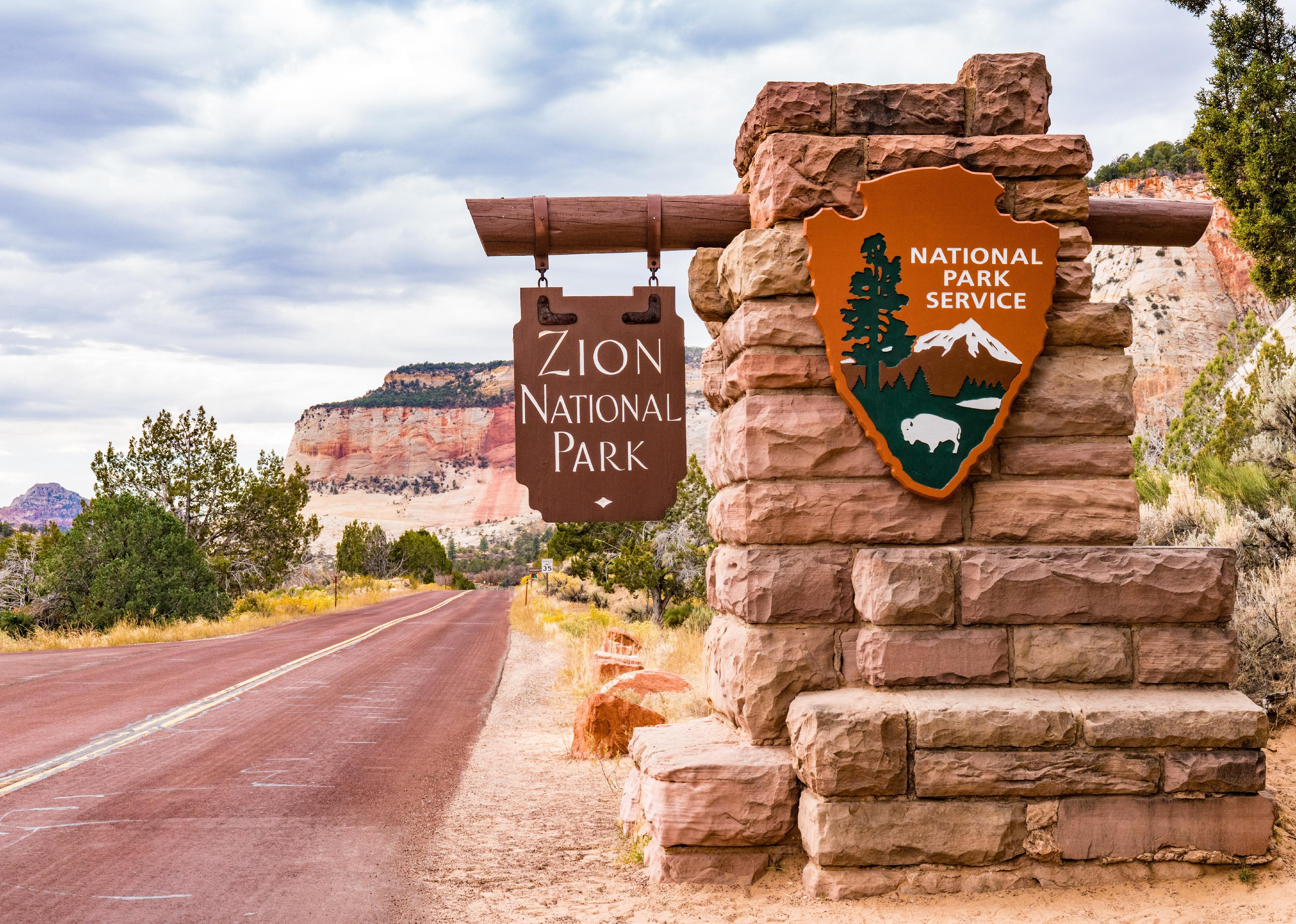anthony heflin // Shutterstock People entered U.S. national parks nearly 312 million times in 2022, up by 15 million visits from the year before, according to the National Park Service. Eight of these federally-owned and protected parks garnered 26% of visits, and another 25% of visits came from the 331 least-visited parks. President Woodrow Wilson first signed the “Organic Act” on August 25, 1916, creating the National Park Service. Since then, the service has helped safeguard so many of the nation’s scenic treasures with titles as varied as parks, preserves, reservations, fossil sites, and more. Stacker zooms in on national parks, and large land or water areas, typically larger than national monuments and more general than national preserves. Stacker used publicly available data and resources from the National Park Service to compile this brief history of all 63 national parks in the U.S. Every national park is a natural or cultural resource the federal government deemed worthy of protection. Congress typically passes a statute to create a national park. Before that, each park passed a rigorous screening process to determine whether it is worth federal conservation. Researchers with the NPS have to deem the area of national significance, in other words, it is an unspoiled example of a resource that tells the story of U.S. natural or cultural heritage and history. Many of the older parks on this list, such as Acadia National Park, started as national monuments at the beginning of the 20th century, and later became national parks. If you’re looking for your next outdoor adventure, the West Coast offers plenty of opportunities. California has nine. Arizona and Washington each have three, and Oregon adds one more to the list. But national parks are found throughout the nation and offer a wide range of sites and experiences. Acadia National Park, Maine Doug Lemke // Shutterstock Before Acadia became a national park, it was home to the Wabanaki people for 12,000 years. After colonization, European American settlers and tourists began to strain the infrastructure of the Maine islands that now make up the park. In 1916, wealthy landowners donated thousands of acres to the care of the government, and in 1929, the park was officially named Acadia National Park. Today, it’s one of the top 10 most visited national parks. NPS calls it the “crown jewel of the North Atlantic coast. National Park of American Samoa, American Samoa Danita Delimont // Shutterstock The National Park of American Samoa is the only U.S. national park south of the equator. NPS established the park in 1988 across three islands in the U.S. territory. The park intends to conserve the tropical rainforests, coral reefs, and archaeology of the islands, among other things. Arches National Park, Utah Fotoluminate LLC // Shutterstock If you’ve ever seen a picture of Arches National Park in Utah, it probably contained the Delicate Arch, the most popular feature of the park. There are more than 2,000 naturally-forming arches in the park, as well as balanced rocks and other unique rock formations. President Herbert Hoover first signed a proclamation to preserve the land in 1929, and the area officially became a national park in 1971. Badlands National Park, South Dakota Paul Brady Photography // Shutterstock Badlands National Park may have gotten its name from the original inhabitants of the land. The Lakota people called this part of South Dakota “mako sica,” which translates to “bad lands,” likely a reference to the terrain that makes living here difficult. Today, the national park is known for its many mammal fossils and for its clear views of the Milky Way thanks to the dark sky. Big Bend National Park, Texas Piotr Kalinowski Photos // Shutterstock Texas’ largest national park was established in June 1944. It preserves large parts of the Chihuahuan desert, the Chisos Mountains, and the Rio Grande River. Biscayne National Park, Florida Wangkun Jia // Shutterstock Biscayne Bay, inside Biscayne National Park, is one of the top places for scuba diving in the U.S. The national park is about 30 miles south of Miami and was originally created in 1968 to protect the area’s keys, coral reefs, and marine life. Black Canyon of the Gunnison National Park, Colorado Kent Raney // Shutterstock Colorado’s Black Canyon of the Gunnison may be one of the newer national parks, having been established in 1999, but the landscape is much older. The canyon has some of the oldest exposed rocks at almost two billion years old, not to mention the 2,250-foot Painted Wall, which is more than 1,000 feet taller than the Empire State Building. Bryce Canyon National Park, Utah Andriy Blokhin // Shutterstock Bryce Canyon is known for its many hoodoos–columns of weathered rock with a larger top, like the shape of a mushroom. The land in Utah officially became a national park in 1928 after first being declared a national monument in 1923. It encompasses more than 35,000 acres and is less than 40 miles from another popular park, Zion. Canyonlands National Park, Utah Kelly vanDellen // Shutterstock Canyonlands National Park was established in 1964 to conserve the canyons, buttes, and arches carved by the Colorado River and its tributaries. Canyonlands may not be as popular as other Utah national parks like Zion and Arches, but it still offers incredible views. Capitol Reef National Park, Utah LHBLLC // Shutterstock Another one of Utah’s five national parks, Capitol Reef is also more of a hidden gem. It became a national park in 1971. In 2015, it was designated an International Dark Sky Park. Carlsbad Caverns National Park, New Mexico Kit Leong // Shutterstock Carlsbad Caverns National Park in New Mexico has some of the most publicly-accessible caves in the world. In order to protect the caves, timed-entry tickets must be reserved for $1 per person before getting to the park, either online or by phone (877-444-6777). Once visitors arrive during their scheduled time, they’ll pay an entrance fee. Channel Islands National Park, California MarkinStillwater // Shutterstock One of the country’s least visited national parks can be found off the coast of Southern California. Five islands comprise Channel Islands National Park. Anacapa Island, which is about one square mile in total, is great for birding, and Santa Cruz is known for sea cave kayaking. Congaree National Park, South Carolina University of College // Shutterstock South Carolina’s only national park is Congaree, located outside of the city of Columbia. Established in 2003 after being declared a national monument in 1976, the federally-protected land contains an old-growth bottomland hardwood forest. It is the largest intact area of this kind in existence in the southeast. It is also one of the smallest national parks when it comes to acreage. Crater Lake National Park, Oregon Cat Dang Photography // Shutterstock Southern Oregon is home to Crater Lake National Park, which became a national park in 1902. Crater Lake is the deepest lake in the U.S. at 1,943 feet. It’s also one of the clearest and cleanest lakes in the world. Cuyahoga Valley National Park, Ohio Kelly vanDellen // Shutterstock Cuyahoga Valley became a national park after years of pollution in the area between Cleveland and Akron spurred people into action. A fire on the Cuyahoga River in 1969 inspired Earth Day and helped launch the Environmental Protection Agency (EPA). Death Valley National Park, California and Nevada fotomak // Shutterstock This national park along the eastern border of California and the western part of Nevada is known for being the hottest, driest, and lowest national park. The area became a national monument in 1933 to protect it from mining and became a national park in 1994. Denali National Park, Alaska Jay Yuan // Shutterstock The highest mountain on the continent is found in Alaska at Denali. Denali means “the tall one” in the Koyukon language, spoken by the native Athabascan people. Dry Tortugas National Park, Florida Michael Gordon // Shutterstock Seven islands are the only land found in this national park near the Florida Keys, but the real gems are underwater, such as the coral reef and marine wildlife. Dry Tortugas National Park is only accessible by seaplane or boat. Everglades National Park, Florida JHVEPhoto // Shutterstock When visitors head back to Florida’s mainland, they can find Everglades National Park on the southern tip of the peninsula. This is the largest mangrove ecosystem found in the western hemisphere and is home to several endangered and threatened animal species, such as the Loggerhead sea turtle. Gates of the Arctic National Park, Alaska Danita Delimont // Shutterstock NPS’ second largest wilderness area is in Alaska, north of the Arctic Circle. Visitors must be ready for a rugged adventure because there are no trails, signs, or even roads into the park. Gateway Arch National Park, Missouri and Illinois William Silver // Shutterstock On the other hand, St. Louis’ Gateway Arch National Park is full of people in and around the iconic 630-foot tall monument, the largest man-made monument in the country. The national park tells the story of the many people who called this area home and the important court case of Dred Scott, tried in St. Louis’ old courthouse. Scott’s case hastened the Civil War. Glacier National Park, Montana
The history behind all 63 national parks in the US















